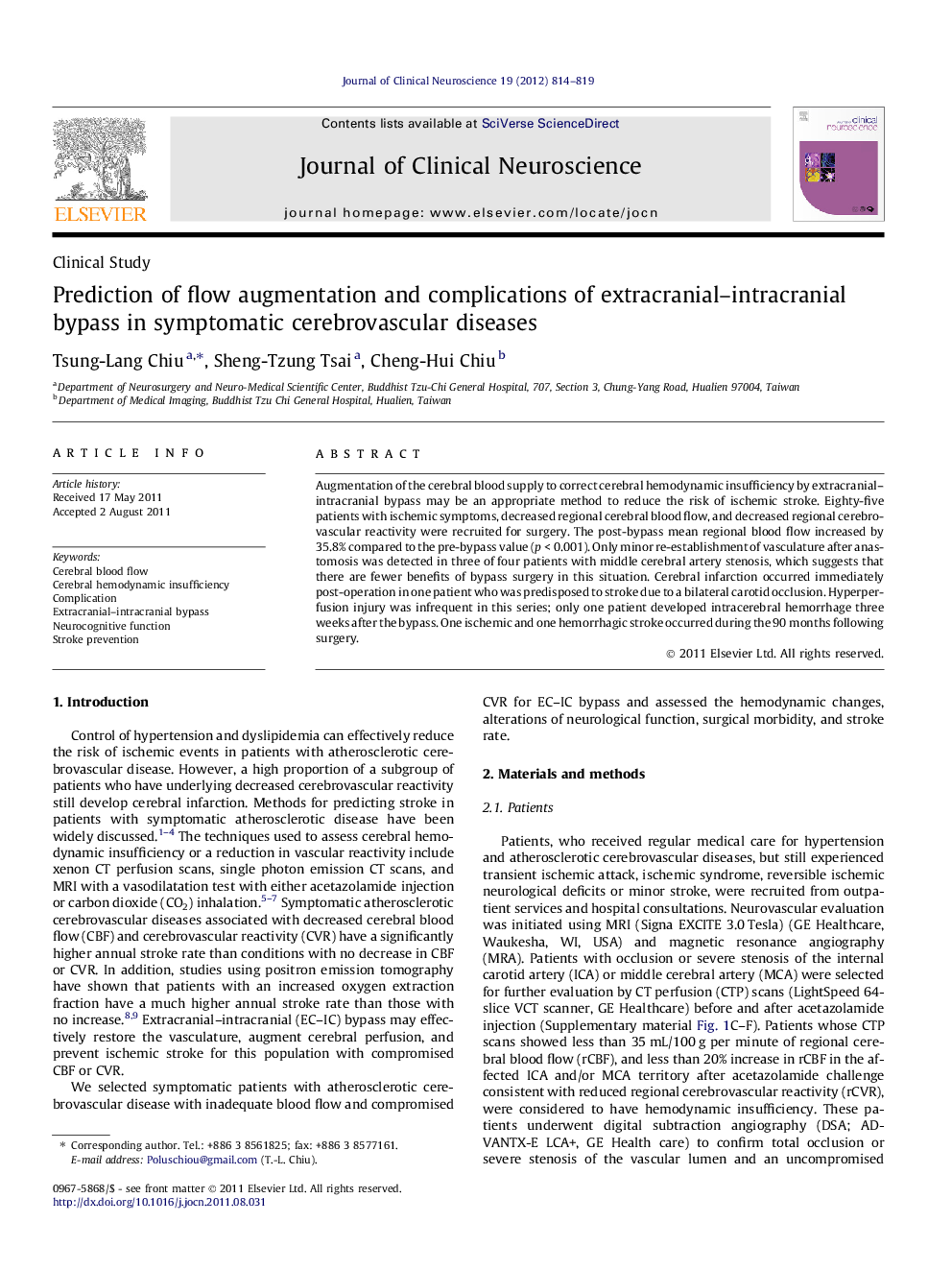| Article ID | Journal | Published Year | Pages | File Type |
|---|---|---|---|---|
| 3060566 | Journal of Clinical Neuroscience | 2012 | 6 Pages |
Augmentation of the cerebral blood supply to correct cerebral hemodynamic insufficiency by extracranial–intracranial bypass may be an appropriate method to reduce the risk of ischemic stroke. Eighty-five patients with ischemic symptoms, decreased regional cerebral blood flow, and decreased regional cerebrovascular reactivity were recruited for surgery. The post-bypass mean regional blood flow increased by 35.8% compared to the pre-bypass value (p < 0.001). Only minor re-establishment of vasculature after anastomosis was detected in three of four patients with middle cerebral artery stenosis, which suggests that there are fewer benefits of bypass surgery in this situation. Cerebral infarction occurred immediately post-operation in one patient who was predisposed to stroke due to a bilateral carotid occlusion. Hyperperfusion injury was infrequent in this series; only one patient developed intracerebral hemorrhage three weeks after the bypass. One ischemic and one hemorrhagic stroke occurred during the 90 months following surgery.
